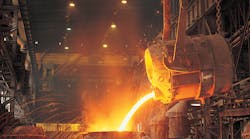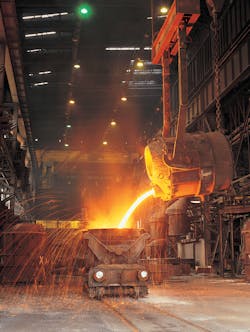For years, a four-digit AISI/SAE (American Iron and Steel Institute/Society of Automotive Engineers) index system identified certain grades of carbon and alloy steels according to standard chemical compositions. The AISI stopped issuing specifications back in the 1990s, and AISI grade designations have been renamed as SAE designations.
The SAE designations are four-digit codes that identify the chemical composition of carbon and alloy steels. But there are some alloy steels that carry a five-digit designation (such as 30XXX and 51XXX). The first digit identifies the major alloying agent(s), with 1 standing for carbon, 2 for nickel, 3 for nickel and chromium, 4 for molybdenum, 5 for chromium, 6 for chromium and vanadium, 8 for nickel, chromium, and molybdenum, and 9 for silicon and manganese steel.
The second digit of the series indicates the approximate concentration of the major alloying element in percentiles. And the last two digits indicate the carbon concentration (in 0.01% units). For example, 5130 designates a chromium steel with 1% of chromium and 0.3% of carbon.
There can also be letters B or L between the second and third digits. “B” indicates that 0.0005% to 0.003% of boron was added for better hardenability. The “L” means 0.15% to 0.35% of lead was added for better machinability.
Here’s a look at some common carbon and alloy steel designations:
1XXX: Carbon steels
10XX: Plain carbon
11XX: Free machining, resulphurized (screw stock)
12XX: Free machining, resulphurized, resphosphorized
13XX: Manganese steels
15XX: High manganese carburizing steels
2XXX: Nickel steels
23XX: 3.5% nickel
25XX: 5.0% nickel
3XXX: Nickel-chromium steels
31XX: 1.25% nickel, 0.60% chromium
32XX: 1.75% nickel, 1% chromium
33XX: 3.5% nickel, 1.5% chromium
30XXX: Corrosion and heat resisting steels
4XXX: Molybdenum steels
40XX: Carbon-molybdenum
41XX: Chromium-molybdenum
43XX: Chromium-nickel-molybdenum
45XX and 48XX: Nickel-molybdenum
5XXX: Chromium steels
51XX: Low chromium
52XXX: Medium chromium
51XXX: Corrosion and heat resisting
6XXX: Chromium-vanadium steels
61XX: Chromium 1.0%
72XX: Tungsten-chromium steels
81XX, 86XX, 87XX: Nickel-chromium-molybdenum
92XX: Manganese-silicon
93XX: Nickel-chromium-molybdenum
94XX: Manganese- nickel-chromium-molybdenum
97XX and 98XX: Nickel-chromium-molybdenum
XXBXX: Minimum of 0.0005% boron
XXLXX: Minimum of 0.15% lead
David Zimmermann is president of Pivot Point Inc., Hustiford, Wis.


